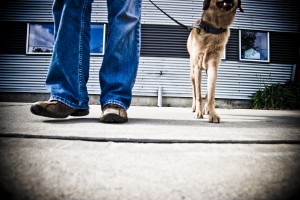MICHAEL BAUGH CPDT-KA, CDBC
HOUSTON – A lot of people think their dog has selective hearing when it comes to basic obedience cues, especially coming when called. No matter how many times they call their dog, it seems he’s just not listening. Some folks even worry their dog may be ignoring them out of spite. Fortunately, that last one probably isn’t true. He just hasn’t been trained yet to tune into you when you call.
It turns out the key to really effective dog training isn’t so much about listening. It’s about teaching your dog to look at you. Dogs who are keeping their eyes on you are also keeping their ears attuned to what you are saying. In fact, most precision obedience training is really about the dog’s visual attention, not his listening. Dogs actually learn visual cues (hand signals) more easily than they learn verbal cues (words).
Start at the beginning. The first thing I recommend people teach their dog is eye contact. It’s important that dogs learn to focus their attention on our faces. It sets them up to catch our verbal instructions on the first go around. It also allows them to better read our facial expressions for feedback on how they’re doing (dogs are experts at reading human facial expression, even subtle change in our expressions).
Here’s how to do it. Keep some of your dogs kibble in your pocket. Every time you catch him glancing up at your face say “yes.” Then, immediately follow up by giving him a piece of his food. This is called capturing a behavior. In a short time, your dog will be watching you all the time regardless of whether or not you have food on you. Once you he’s doing that you can start calling his name (only say it once please). When he responds to his name with a look up to your face, immediately say “yes” and treat him. Repeat this often so that his name becomes like a magic word that draws your dog’s attention to you immediately every time.
Before long your dog will be glued to you, watching attentively for further instructions. Your friends will all say, “Wow he really listens.” Of course you’ll smile and agree, because you know he’s looking at you.
(from myfoxhouston.com)


